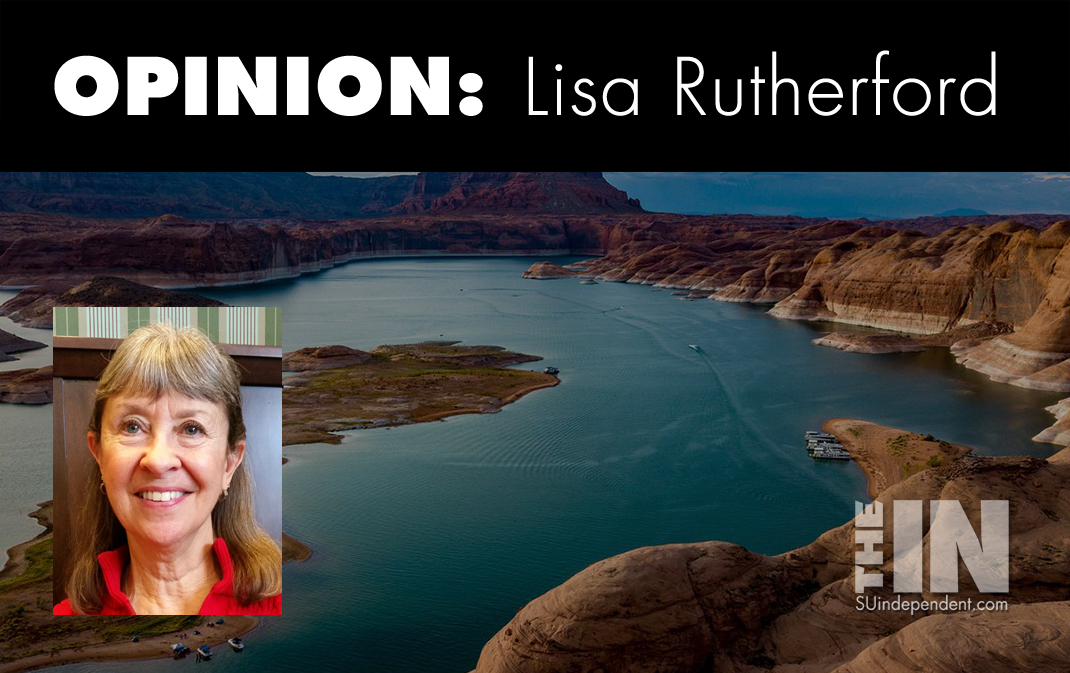
Lake Powell Pipeline and Northern Corridor Update
January 2021 the Colorado River Compact states, Lower Basin and the Upper Basin, which includes most of Utah, began a five-year process to review the 2007 Interim Guidelines on how the river is managed and plan for beyond 2026. Following these twenty years of drought we have experienced it could be a very contentious process. Utah knew these meetings would be held. They have been scrambling to secure water for the Lake Powell Pipeline (LPP) ever since the 2006 LPP Development Act was passed believing they have more Colorado River water due than is being used. Now Utah’s LPP effort is on hold because of challenges by the other six basin states who insist Utah go through the formal approval process as dictated by the Colorado River Compact.
The state’s belief that it has a right to more water than is currently being used is challenged by its own Department of Water Rights’ April 2005 presentation that showed Utah’s Upper Basin water right is over-allocated. That over allocation includes the LPP water.
At the same time, and probably not coincidentally, as this five-year negotiation process begins, money-hungry private investors are scouring the west buying up water claims. Some think this market-driven approach to managing water will be best and will rewrite how water is managed in the West. With water being so cheap, especially in Utah, much is wasted. Much of that waste goes on agriculture and lawns. In theory a market-based system would drive up water prices thereby driving down waste. But how much would the price of water rise? Water is a necessity after all.
Although some say that using a market-based system makes water a commodity and that it should not be, it really always has been a commodity in that those who got to the water first had the right. They may not have bought it, but they got it. And those rights could be sold. This is just putting the commodity on steroids and seems ripe for manipulation as has been seen in other markets. There are myriad complexities surrounding this issue, which add to the problem. Proponents say the system would “compel” users to use water wisely but what that exactly means remains to be seen. They also say they’re not in it for the money, but with hedge funds involved and people who made money shorting mortgages leading to the Great Recession involved, I say, “Right!!” Australia’s experience with water markets has not been a good one.
So, at this time, the Lake Powell Pipeline is in limbo and it remains to be seen exactly how this will play out. Utah doesn’t want to budge while other states in the Lower Basin have already started giving by using less water. Many places have shown that you can still grow while using less water something that is anathema to Utah’s pols who equate water with growth. Perhaps these current negotiations will force some reality on Utah, force them to look at their own numbers—whether it is water rights or LPP costs—and plan a new more water-wise future.
Then there’s the proposed Northern Corridor, another contentious issue in Washington County. Prior to the administration transition on January 20, 2021 and following the 2020 public comment period on the Environmental Impact Statement draft the Bureau of Land Management (BLM) issued a Record of Decision on the project which grants UDOT the right-of-way to build the controversial highway through Red Cliffs National Conservation Area (NCA)/Reserve—dedicated to protection and preservation including protection of the threatened Mojave desert tortoise. This is an unfortunate decision given that the agency’s own Final Environmental Impact Statement (FEIS) revealed that two alternative routes—Red Hills Parkway Expressway including overpass to I-15 and a one-way couplet using St. George Boulevard and 100 South—actually perform as well or better than UDOT’s route, would not harm Red Cliffs, and potentially cost less.
From the FEIS: UDOT estimates that construction of the UDOT Application Alignment would cost between $81 million and $123 million.
UDOT estimates that construction of the Red Hills Parkway Expressway Alternative would cost between $97 million and $146 million.
UDOT estimates that construction of the One-way Couplet Alternative would cost between $22 million and $33 million.
It’s interesting to note that the $81 million to $123 million figure by UDOT contradicts the estimate made by Dixie Metropolitan Planning Organization in their Regional Transportation Plan. That document shows that the planned route would cost close to $150 million with all connected roads.
So, is this NC a done deal? Hardly, but while the ink is still drying on the ROD, the county and agencies are blissfully planning how they will manage Red Cliffs under the new decision and how they will convince those who currently use the new far-removed area currently called Zone 6 to change their damaging ways. For twenty-five years OHVers, mountain bikers, shooters, climbers, campers, etc., have had virtually free reign in the area west of Bloomington and Sunbrook. Had the area been included in Red Cliffs, most of which is north of St. George, back in 1995 perhaps the county would already have this under control—although given the current management we see in Zones 1-5 in Red Cliffs even that’s not a sure thing. They’re planning a new name for the area so that users will know it’s a new game. Just as the legislature is planning to loosen Utah’s gun laws, our local authorities will try to reign in the Zone 6 shooters and OHVers. Two assigned patrol officers may help!
While the county makes plans, the legal system may be coming into play. Given that the EIS information shows opportunities for moving traffic while still protecting the existing Red Cliffs area and the threatened Mojave desert tortoise, there seems much fodder for a successful court challenge. Two other issues exist. BLM failed to address the impacts of last summer’s devastating wildfires in the Red Cliffs NCA in a supplemental draft EIS, and the county used Land and Water Conservation Fund money to buy private land in Red Cliffs and now wants to turn that land that was dedicated to recreation into providing for transportation. These facts do not appear to weigh in their favor.
With President Biden’s administration in charge there may be opportunities that don’t even involve lawsuits. Decisions made under former President Trump are now under review and will bring a new set of eyes to past decisions with potential to revoke or vacate.
For those of us who love Red Cliffs, want it protected, and not have local politics have a heavy hand in decisions this is some good news.
Viewpoints and perspectives expressed throughout The Independent are those of the individual contributors. They do not necessarily reflect those held by the staff of The Independent or our advertising sponsors. Your comments, rebuttals, and contributions are welcome in accordance with our Terms of Service. Please be respectful and abide by our Community Rules. If you have privacy concerns you can view our Privacy Policy here. Thank you!
Click here to submit an article, guest opinion piece, or a Letter to the Editor




